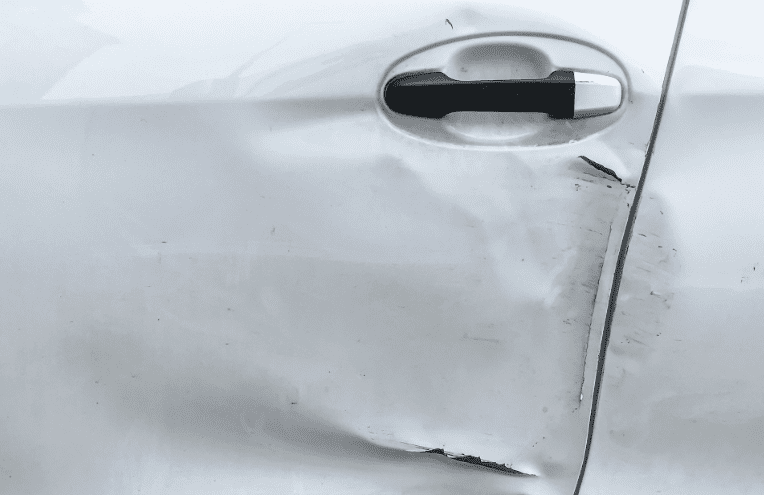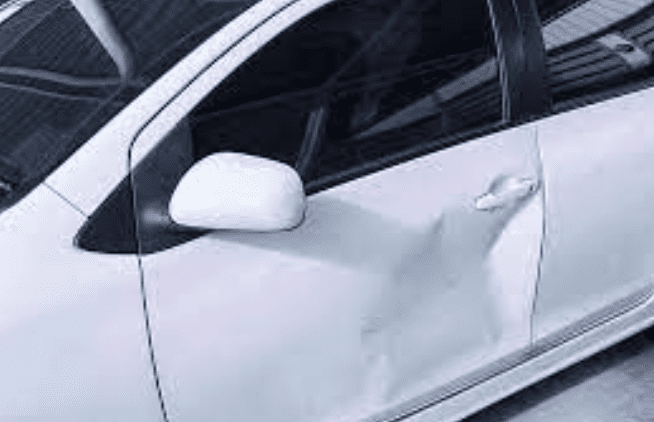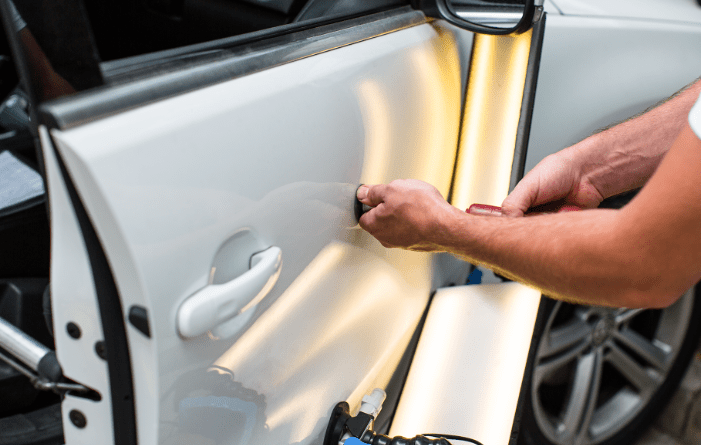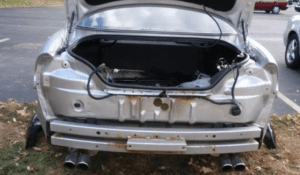When it comes to the smooth functioning of a vehicle, the integrity of its components, including the doors, plays a crucial role. Car doors, being one of the most frequently used parts, are often subject to wear and tear, leading to a variety of issues that necessitate timely repair. From minor dents to major structural damage, ensuring that car doors are in top condition not only ensures the safety of the vehicle and its occupants but also contributes to maintaining the overall value of the car.
This comprehensive guide delves into the intricacies of car door repair, providing insights into common issues, repair techniques, and maintenance tips for a seamless and hassle-free experience.
Common Causes of Car Door Damage
Understanding the root causes of car door damage is instrumental in implementing preventive measures and addressing issues promptly. Some of the most common reasons for car door damage include:
- Accidents and Collisions: Accidents, ranging from minor fender benders to more serious collisions, can cause substantial damage to the car doors, leading to dents, scratches, or misalignment.
- Wear and Tear: Over time, continuous usage, exposure to harsh weather conditions, and natural degradation can result in the weakening of door components, hinges, and latches, affecting their smooth operation.
- Vandalism and Break-Ins: Deliberate acts of vandalism, attempted break-ins, or theft can leave behind visible damage, such as scratches, dents, or even broken locks, necessitating immediate repair.
Effective Car Door Repair Techniques
Car door repair encompasses a range of techniques, each tailored to address specific issues. Some of the most effective car door repair methods include:
- Dent Removal: For minor dents and dings, paintless dent repair (PDR) is a popular technique that involves massaging the dent out from the backside of the panel without affecting the original paint, thereby restoring the door’s aesthetic appeal.
- Scratch and Paint Repair: Surface scratches and paint damage can be efficiently addressed through buffing, polishing, and touch-up painting, ensuring a seamless finish that seamlessly integrates with the rest of the car body.
- Hinge and Latch Adjustment: Misaligned or malfunctioning hinges and latches can cause difficulty in opening or closing the door. Adjusting these components ensures smooth operation and prevents further damage to the door structure.
- Panel Replacement: In cases of severe damage, such as significant dents or structural impairment, partial or complete panel replacement might be necessary, requiring professional expertise to ensure proper installation and alignment.
- Lock and Handle Repair: Malfunctioning locks or handles not only compromise security but also impede the ease of access. Repairing or replacing these components is crucial for maintaining the functionality and security of the vehicle.
Professional vs. DIY Car Door Repair Approaches
While minor scratches and dents might be manageable through DIY techniques, more complex issues, and structural damage necessitate professional intervention.
Professional car door repair services offer the expertise, specialized tools, and industry knowledge required to accurately assess the extent of the damage and implement appropriate repair strategies, ensuring long-term durability and seamless integration with the car’s original design.
Maintenance Tips for Ensuring Longevity
Implementing regular maintenance practices can significantly extend the lifespan of car doors and prevent potential issues. Some essential maintenance tips include:
- Regular Cleaning: Routinely washing and waxing the car’s exterior, including the doors, helps prevent the buildup of dirt, grime, and corrosive substances that can lead to paint damage and rust formation.
- Lubrication of Hinges and Latches: Applying lubricants to hinges, latches, and other moving parts prevents friction-induced wear and ensures smooth functioning, reducing the likelihood of component failure.
- Parking Considerations: Parking the vehicle in covered areas or using car covers shields the car doors from direct exposure to harsh weather conditions, reducing the risk of paint fading, rusting, and other weather-related damage.
- Avoiding Slamming: Encouraging gentle handling of car doors and avoiding slamming them shut minimizes stress on the hinges, latches, and panels, preserving their structural integrity over time.

Common car door problems and their solutions
Car doors are essential components of any vehicle, providing security, protection, and convenience. However, they can be subject to various issues over time, ranging from minor inconveniences to significant safety concerns. Knowing how to identify and address these common car door problems can ensure the smooth functioning of your vehicle and enhance your overall driving experience.
Stiff or Squeaky Hinges:
Problem: One of the most frequent issues with car doors is stiff or squeaky hinges, usually caused by a lack of lubrication or accumulated dirt and debris.
Solution: Regularly lubricate the door hinges using a suitable lubricant, such as silicone spray or white lithium grease. Cleaning the hinges with a degreaser and applying lubricant can significantly reduce friction and eliminate squeaking sounds.
Misaligned Doors:
Problem: Misaligned car doors, resulting from accidents or regular wear and tear, can lead to difficulty in opening or closing the door properly, causing gaps or misfits.
Solution: Consult a professional mechanic to assess the extent of misalignment and realign the door accordingly. Adjusting the hinges, latch, or striker plate can help restore proper alignment and ensure a seamless closing and opening mechanism.
Damaged Door Latch:
Problem: A faulty or damaged door latch can prevent the door from closing securely, posing a significant safety risk during driving.
Solution: If the latch is only slightly jammed, try cleaning it thoroughly and applying lubricant. However, for a severely damaged latch, replacement may be necessary. Contact a reputable auto repair shop to replace the latch with a compatible one for your vehicle model.
Power Locks Malfunctioning:
Problem: Power door locks that fail to function can be a result of electrical issues, damaged wiring, or a faulty actuator.
Solution: Conduct a thorough inspection of the power lock system, including the fuse, wiring, and actuator. Replace any damaged components and ensure all electrical connections are secure. If the problem persists, consult a professional auto electrician to diagnose and repair any complex electrical issues.
Exterior Handle Issues:
Problem: Exterior door handles can become loose, broken, or dysfunctional due to frequent use or physical damage.
Solution: Inspect the exterior handle for any signs of damage or looseness. Replace the handle if it is severely damaged, and ensure it is securely fastened to the door. Regularly clean and maintain the handle to prevent the accumulation of grime and debris, which can affect its functionality.
Regular maintenance, prompt identification of problems, and timely repairs can extend the lifespan of your car doors and contribute to a safe and smooth driving experience. However, for complex car door issues, it is advisable to seek professional assistance from experienced auto technicians to ensure effective and long-lasting solutions.
Car Door Repair in Houston, TX
If you live in Houston, TX, and need car door repair, there are a number of reputable shops that can help you. Whether your car door has been damaged in a collision, is sagging, or won’t close properly, these shops have the experience and expertise to fix the problem.
Here are a few of the most common car door repair that Houston shops offer:
- Dent repair: If your car door has been dented, a Houston repair shop can usually fix it without having to repaint the door. This is a more affordable option than repainting, and it can be done in a relatively short amount of time.
- Sagging door repair: A sagging car door can be caused by a number of things, including loose hinges, worn-out springs, or a damaged door frame. Houston repair shop can diagnose the problem and make the necessary repairs to get your door working properly again.
- Door latch repair: If your car door won’t close properly, it’s likely that the door latch is broken. Houston repair shops can replace the latch and get your door closing securely again.
- Window repair: If your car door window is broken or cracked, a Houston repair shop can replace it with a new window.
- Handle repair: If your car door handle is broken or loose, a Houston repair shop can repair or replace it.
- Lock repair: If your car door lock is broken or doesn’t work properly, a Houston repair shop can repair or replace it.
When choosing a car door repair shop in Houston, it’s important to do your research and read reviews from other customers. You should also make sure that the shop has the necessary experience and expertise to repair your specific problem.
for car door repair in houston call us at (713)243-3535
DIY car door repair tips for beginners
Car door repair can seem daunting, but with some basic knowledge and the right tools, many issues can be tackled effectively at home. Here are some simple do-it-yourself (DIY) car door repair tips for beginners, enabling you to handle common problems and save on repair costs:
- Lubricate Hinges and Latches: Regularly apply lubricant to door hinges and latches to prevent stiffness and squeaking. Use a suitable lubricant like silicone spray or white lithium grease. Simply spray or apply the lubricant to the hinges and latch mechanism, and open and close the door several times to distribute it evenly.
- Adjusting Misaligned Doors: If your car door seems misaligned, you can attempt to adjust it on your own. Use a wrench or a screwdriver to loosen the bolts on the door hinges and reposition the door. Ensure it aligns properly with the frame and then retighten the bolts. Make sure to test the door’s opening and closing functionality after adjustment.
- Fixing Exterior Handle Issues: If the exterior door handle is loose or broken, it may be a simple fix. Remove the inner door panel carefully, locate the handle assembly, and check for any loose or broken parts. Tighten any loose screws or bolts, and if any parts are broken, consider replacing them with new ones. Reassemble the door panel securely after the repair.
- Repairing Power Locks: To address power door lock issues, start by checking the fuse related to the door locks. If the fuse is blown, replace it with a new one of the same rating. If the issue persists, remove the door panel to access the lock actuator. Inspect the wiring for any signs of damage or disconnection. Repair or replace damaged wiring and ensure all connections are secure.
- Fixing Door Latch Problems: For a malfunctioning door latch, inspect the latch mechanism for any obstructions or accumulated debris. Clean the latch thoroughly, and if it’s still jammed, use a suitable lubricant to improve its movement. If the latch is damaged beyond repair, consider replacing it with a compatible new latch. Follow the manufacturer’s instructions for proper installation.
Remember, when attempting DIY car door repair, always work in a well-lit and well-ventilated area, and take necessary safety precautions. If you encounter complex issues or feel unsure about the repair process, it’s advisable to consult a professional mechanic or seek guidance from an experienced individual. Regular maintenance and timely repairs can ensure the longevity and proper functioning of your car doors.
How to Choose the Best Auto Dent Removal Service for Your Vehicle
How to repair a car door dent without painting?
To car door repair dent without painting, consider the paintless dent repair (PDR) technique. This method involves accessing the backside of the dent and using specialized tools to massage and reshape the metal, restoring it to its original form. By carefully manipulating the dent from behind, without the need for any paint or fillers, this process can effectively remove minor to moderate dents. However, it’s crucial to note that PDR is most suitable for specific types of dents, and the success of the repair depends on the extent of the damage and the skill of the technician performing the repair.
How to fix a sagging car door?
To fix a sagging car door, you will need to tighten or replace the hinges. The hinges are the metal plates that connect the door to the car body. Over time, the hinges can become loose or worn out, causing the door to sag.
To tighten the hinges, you will need a socket wrench or a screwdriver. Simply loosen the screws on the hinges and then tighten them again. Be careful not to overtighten the screws, as this can damage the hinges.
If the hinges are worn out, you will need to replace them. This is a more complex job, but it can be done with basic tools. To replace the hinges, you will need to remove the door from the car. Once the door is removed, you can unbolt the hinges and replace them with new ones.
Here is a brief overview of how to fix a sagging car door by tightening the hinges:
- Open the door and locate the hinges. There are usually two or three hinges on each door.
- Use a socket wrench or screwdriver to loosen the screws on the hinges.
- Tighten the screws until the hinge is snug. Be careful not to overtighten the screws.
- Close the door and check to see if it is still sagging. If it is, tighten the screws again.
- Repeat steps 3 and 4 until the door is no longer sagging.
How to replace a car door handle?
To replace a car door handle, first, remove the inner door panel carefully. Locate the handle assembly and disconnect the rod connecting the handle to the latch mechanism.
Unscrew or unclip the handle from the door, and then disconnect any electrical connectors if applicable. Install the new handle in place, reconnect the rod and any electrical connectors, and ensure proper alignment. Finally, reattach the inner door panel securely.
The Process of Paintless Dent Removal Houston: A Step-by-Step Guide
How to repair a rusty car door?
For rusty car door repair, start by sanding down the rusted areas to remove the rust completely. Apply a rust converter or neutralizer to prevent further corrosion. Then, use body filler to smooth out any indentations left by the rust.
Afterward, prime the area and apply matching paint to blend with the rest of the door. Finally, finish with a clear coat for added protection and a seamless finish.
Conclusion for car door repair
Car door repair is an essential aspect of vehicle maintenance that significantly contributes to the overall safety, functionality, and aesthetics of the car. Understanding the common causes of damage, effective repair techniques, and the importance of regular maintenance is vital in ensuring the longevity and optimal performance of car doors. Whether addressing minor scratches or undertaking extensive structural repairs, timely and professional intervention can prevent further damage and ensure a seamless driving experience, emphasizing the significance of prioritizing the upkeep of car doors for every vehicle owner.






